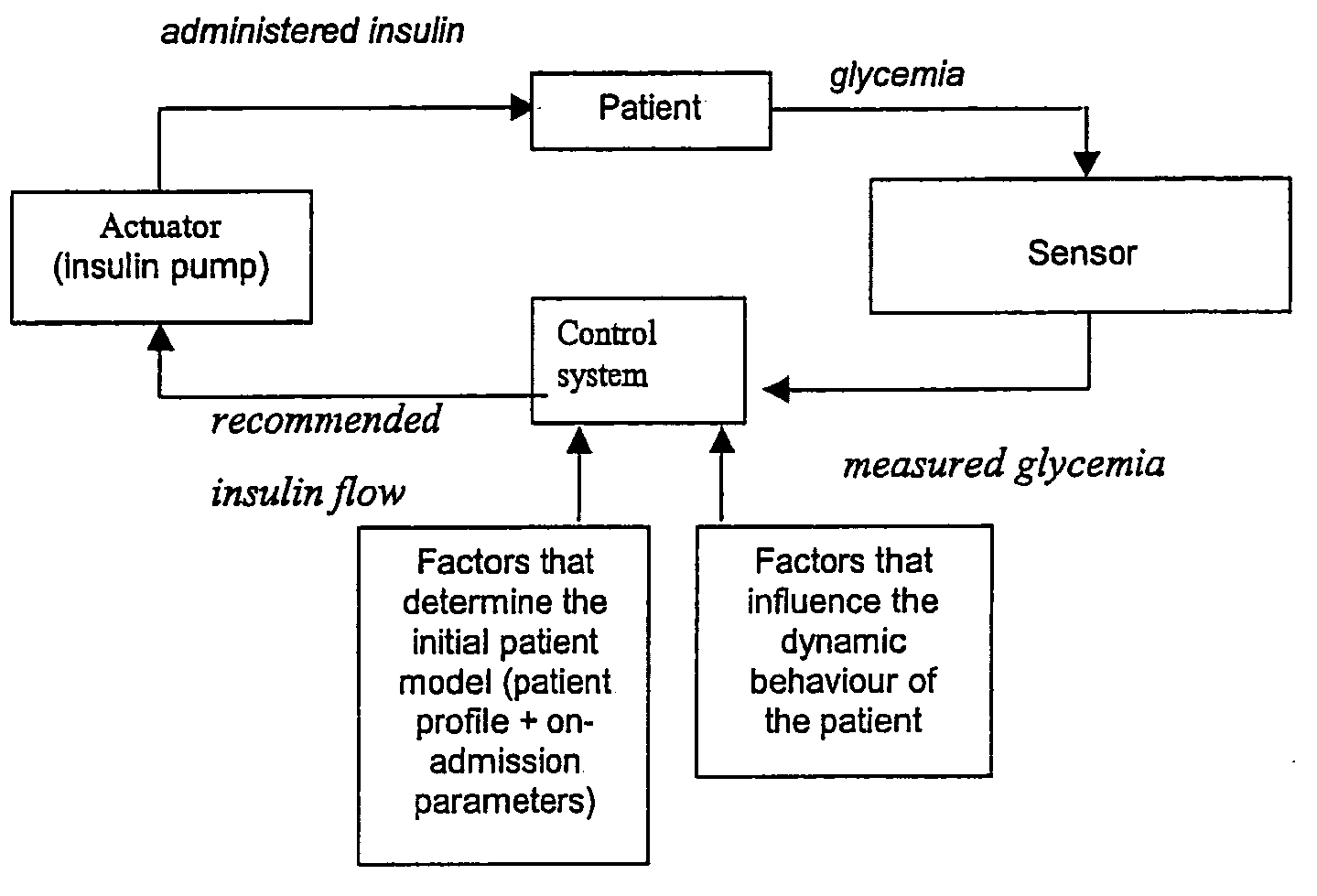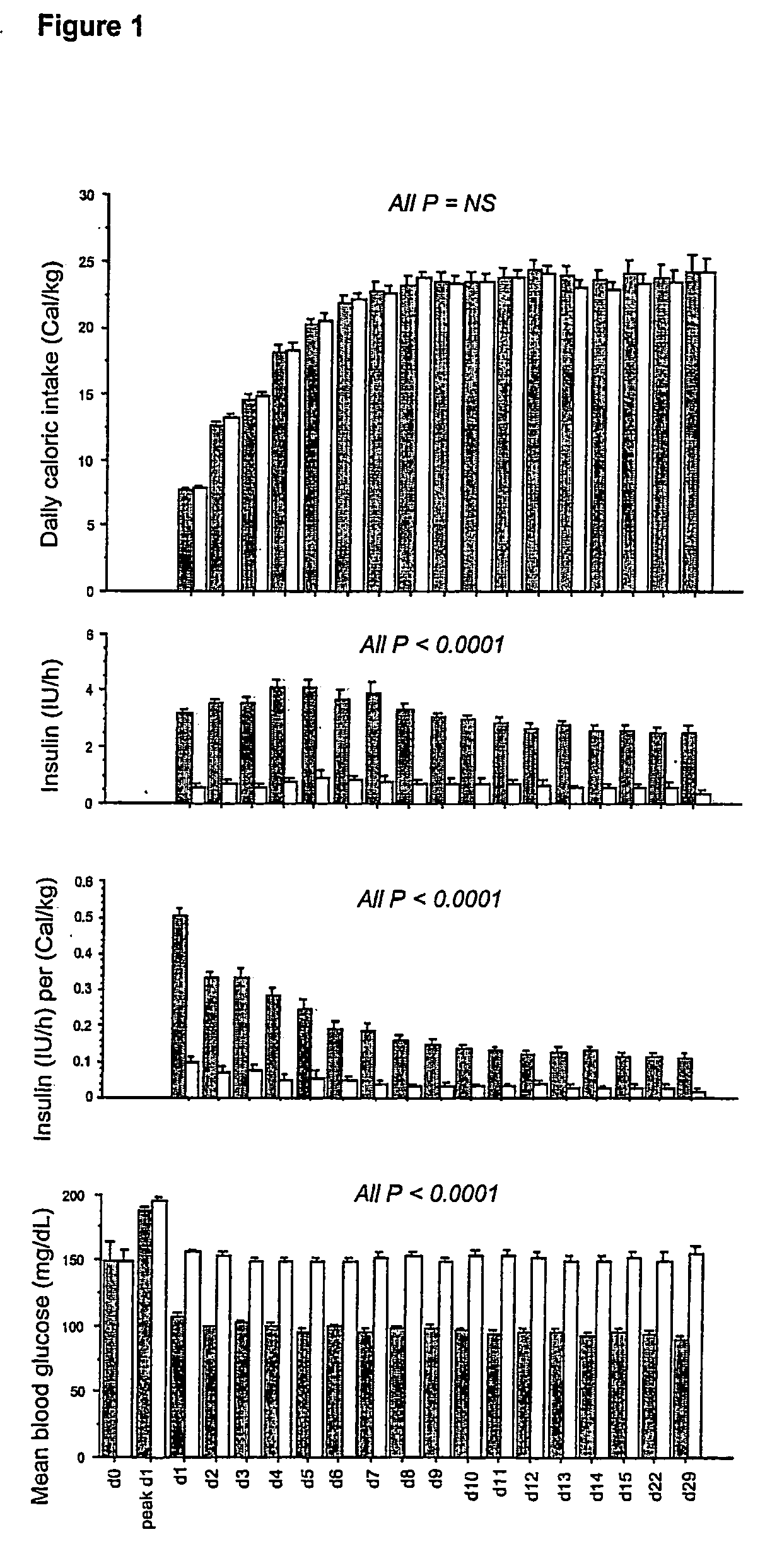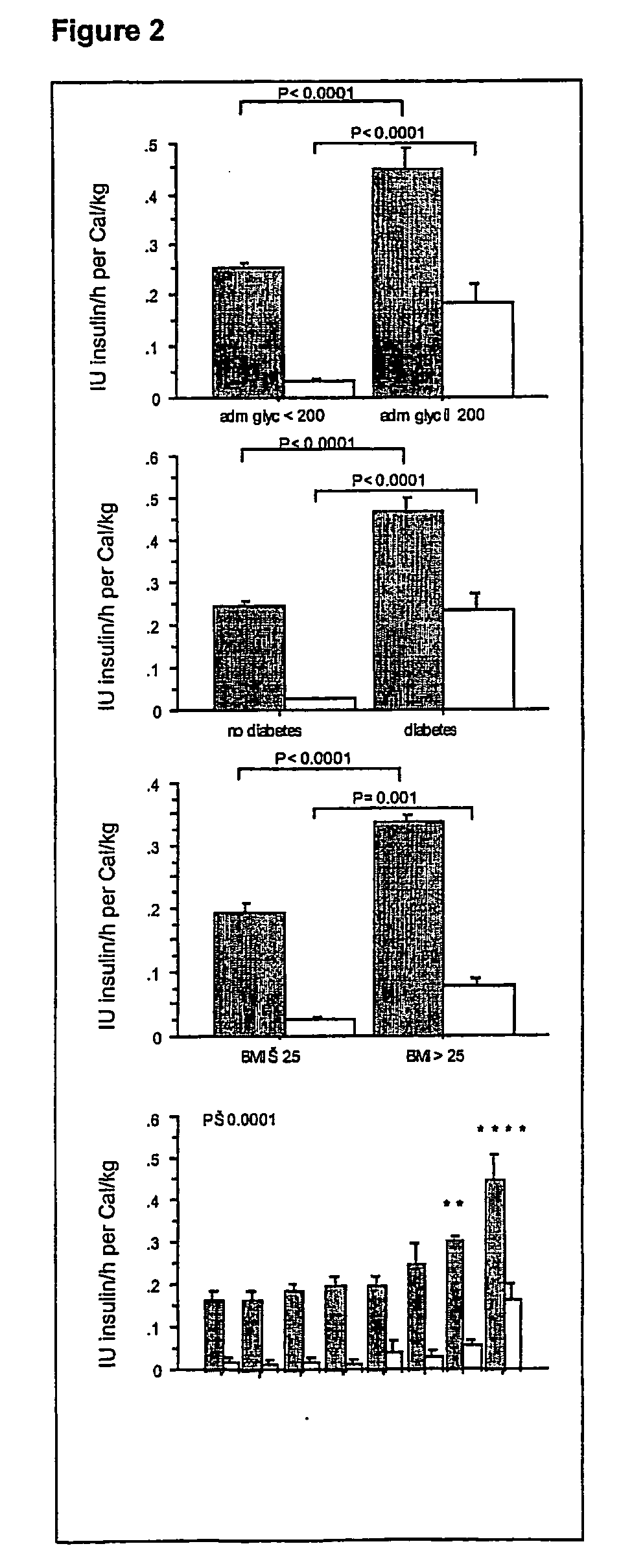Automatic infusion system based on an adaptive patient model
an adaptive patient and automatic infusion technology, applied in adaptive control, instruments, other medical devices, etc., can solve the problem of labor-intensive protocols, achieve the effect of increasing glucose turnover, optimizing host defenses, and increasing glucose turnover
- Summary
- Abstract
- Description
- Claims
- Application Information
AI Technical Summary
Benefits of technology
Problems solved by technology
Method used
Image
Examples
example 1
Material and Methods:
Study Population & Study Design
[0075] The study population (mechanically ventilated adults admitted to our predominantly surgical ICU over a one year episode), has been described in detail elsewhere (Van den Berghe G, et al. N Engl J Med. 2001; 345: 1359-1367). Informed consent had been obtained from the closest family member upon ICU admission. The study protocol was approved by the Institutional Ethical Review Board.
[0076] A study design has been used as described in detail in Van den Berghe G, et al. N Engl J Med. 2001; 345: 1359-1367, Van den Berghe G, et al N Engl J Med. 2001; 346). At intensive care admission, all patients were started on partial nutritional support with intravenous glucose (200 to 300 g / 24 h) and from the next day onward with a standardised feeding schedule with the intention to administer 20 to 30 non-protein Calories / kg / 24 h with a balanced composition (0.13 to 0.26 g nitrogen / kg / 24 h and 20 to 40 percent of non-protein Calories as...
example 2
Results
Detailed Description of Daily Caloric Intake, Insulin Doses and Blood Glucose Control Over Time in Conventionally Treated Patients And in Patients Receiving Intensive Insulin Therapy
[0114] Daily caloric intake, insulin requirements and blood glucose levels (including the upon admission blood glucose level and the highest blood glucose level reached during the first 24 h in ICU) are depicted in FIG. 1.
[0115] All patients underwent a gradual transition from intravenous glucose infusion upon ICU admission to normocaloric balanced nutrition comprising glucose, proteins and lipids, preferably administered via the enteral route. Hence, daily caloric intake progressively increased until ICU day 7, equally in both study groups, starting from a mean 8 Cal / kg / day and reaching a mean 24 Cal / kg / day (FIG. 1, first panel). This strategy resulted in comparable amounts of calories, glucose, proteins and lipids in both study groups at all times, a prerequisite for attributing observations...
example 3
[0134] In present invention a system has been developed that can advise the medical team about the desired insulin administration rate or can apply a more automatic control.
[0135] It has the following properties: [0136] 1. In the initial phase (first 24 h) the hyperglycemia is reduced, as quickly as possible, to stable normoglycemia without causing hypoglycemia.
[0137] 2. The control system is robust (i.e., the blood glucose level is as stable as possible) against complicating factors (e.g., concomitant infection) and changing circumstances (e.g., decreasing insulin resistance, other route of feeding, change in medication, . . . ).
[0138] A general overview of the control system can be inspected in FIG. 5. The system consists of three main parts: [0139] 1. Sensor: the glycemia is measured by a glucose sensor that uses blood obtained through or present in an arterial line (which is present in most patients in the ICU). [0140] 2. The actuator: consists of a programmable insulin pump,...
PUM
 Login to View More
Login to View More Abstract
Description
Claims
Application Information
 Login to View More
Login to View More - R&D
- Intellectual Property
- Life Sciences
- Materials
- Tech Scout
- Unparalleled Data Quality
- Higher Quality Content
- 60% Fewer Hallucinations
Browse by: Latest US Patents, China's latest patents, Technical Efficacy Thesaurus, Application Domain, Technology Topic, Popular Technical Reports.
© 2025 PatSnap. All rights reserved.Legal|Privacy policy|Modern Slavery Act Transparency Statement|Sitemap|About US| Contact US: help@patsnap.com



